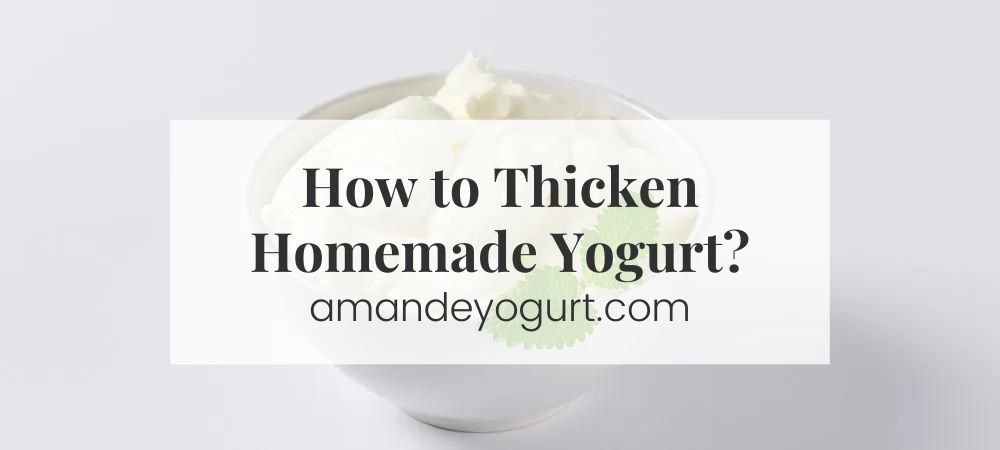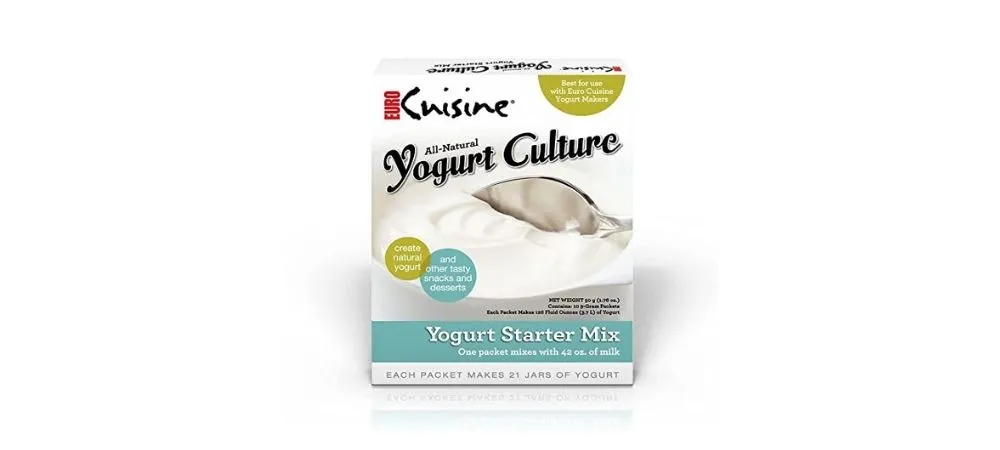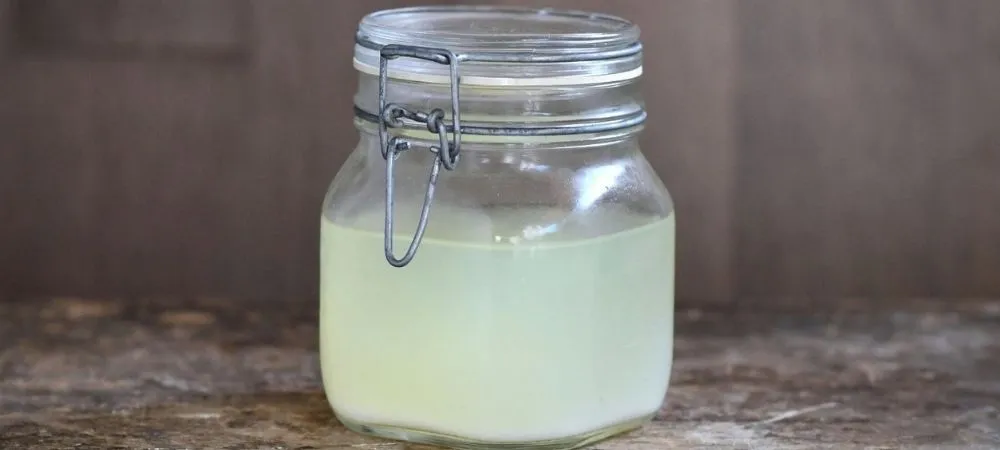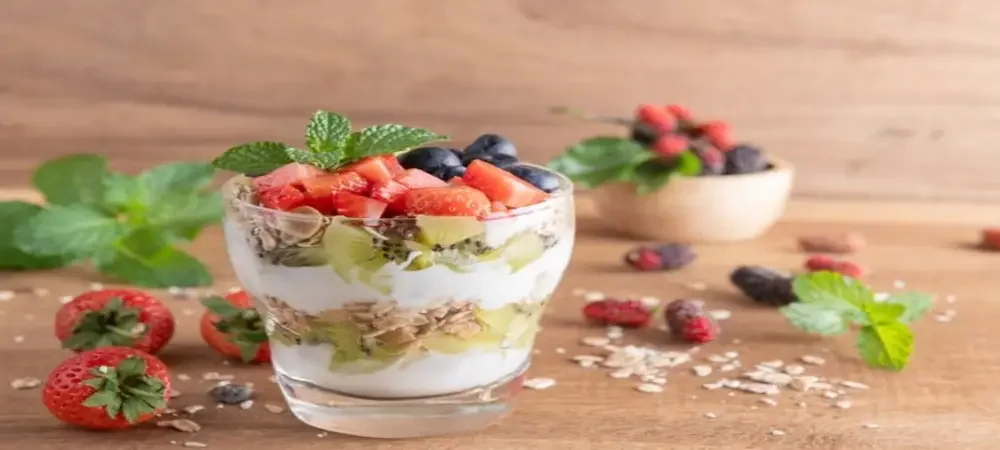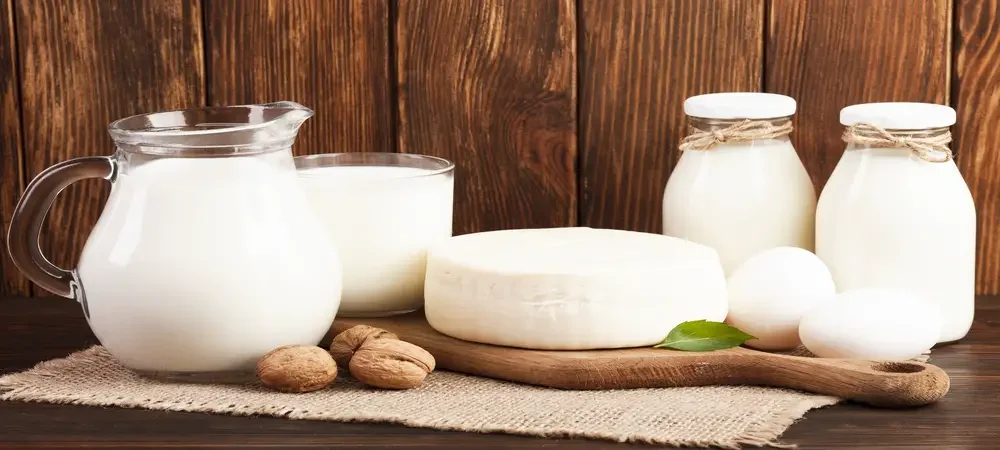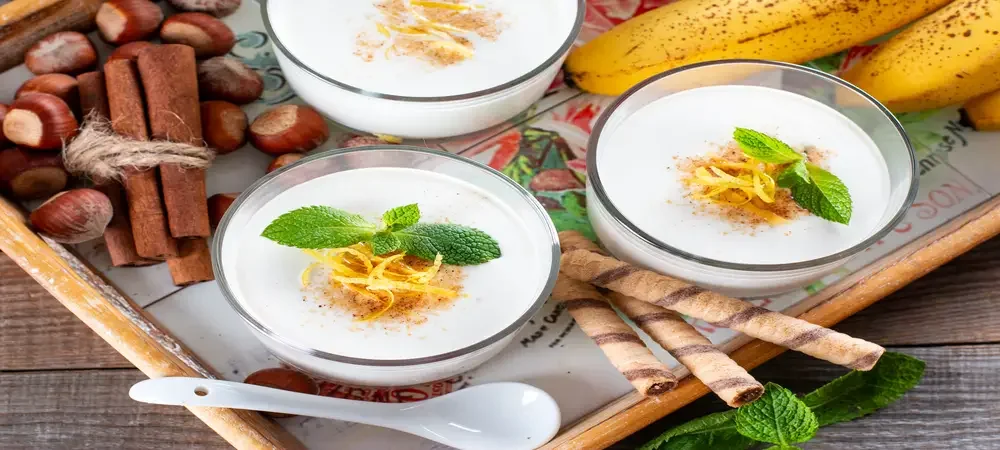Do you often encounter a problem with watery yogurt?
Homemade yogurts are often thin and runny with consistency. Hence, most people ask a common question – Why is my yogurt thin? How to thicken homemade yogurt? Although there is no problem with eating thin yogurt. But it loses its appeal to many. Hence, the thicker the yogurt, the better it is.
While Quora users often suggest using Gelatin but it is not a good choice for vegetarian and vegan people.
If you are tempted to make your homemade yogurt thicker like a store-bought yogurt, this blog is for you!
Fundamentals to Consider While Making Yogurt:
I have listed some important fundamentals that you need to consider before beginning your preparation for a thicker yogurt.
The Incubation Environment
The consistency of homemade yogurt largely depends on time and the temperature for incubation. Only a stable warm temperature helps with the proper bacterial growth. If the temperature of incubating yogurt goes below 36°C / 96°F, the bacteria in the yogurt become dormant.
Probiotic yogurt with therapeutic grades needs to ferment for 24 hours to 36 hours. Too cold or too hot milk can damage the yogurt starter culture bacteria and hinder the process of fermentation. Considering a yogurt maker is ideal if keeping track of time and temperature is bothersome.
If the fermentation process for yogurt slows down, it leads to runny yogurt consistency. Hence you should ensure that the milk is not too hot or too cold to destroy the starter culture.
Starter Culture
Different yogurt culture yield varying types of yogurt. We recommend carefully following your culture’s special handling and storage instructions (or probiotics) to maintain the strains viably and actively.
If you inoculate milk repeatedly with the homemade yogurt starter to re-culture, be careful not to go on doing it indefinitely because the strains might be too few or weak.
If you’re using store-bought yogurt as a starter, avoid varieties that contain thickening agents since they may interfere with re-culturing.
Type of Milk You Will Use
The texture of yogurt largely depends on the type of milk you will use. The structure of milk changes during heating, which affects the consistency of yogurt. We recommend that you try various brands to determine which one creates your preferred consistency. You can achieve consistency as thick as a sour cream by using whole milk.
A heavier or more nutritious yogurt will result from using a lot of milk. A thicker, creamier yogurt comes with using organic milk. Because we were hoping you could get the most therapeutic homemade yogurt possible, we suggest organic milk. Inhibitors in commercial milk may cause problems during fermentation.
The taste and texture of yogurt depend on the type of milk used. Milk such as skimmed milk gets altered in the process of pasteurization beyond homogenization and pasteurization. Raw milk yogurt is thinner than processed cow milk yogurt. Goat milk yogurt is thicker than sheep milk yogurt.
When Should You Consider Thickeners?
It is not always recommended to go for yogurt thickeners when they are not at all required. But there are instances when it is essential to add the thickeners to avoid a runny/watery yogurt. But how to determine, what is the right time to add thickeners and when is not?
Well, here’s the catch! Here are the two prime situations when you should consider adding thickeners.
1. When You Are Using Vegan Thickener
A single-use vegan starter culture needs a thickening agent to get the perfect consistency of yogurt. Before the milk is heated and cultured, you should add the thickener. If you are confused about what type of thickener is best for your vegan yogurt, consider buying this Vegan Yogurt Starter Kit.
Other recommended vegan yogurt starter are as follows:
- Cultures for Health Vegan Yogurt Starter
- Coconut Cream Yogurt Starter Kit
- Non-Dairy Yogurt Culture
- Vegan with Live and Active Probiotics
2. Using Starter Cultures Which are Re-Usable
While using an heirloom starter culture that needs activation, it is common for the activation batch to be thin and liquidy. As the bacterias are freeze-dried and wake up during the first batch. To ensure that consistency and texture are even in the next yogurt batches, you should consider adding thickener.
There are some thickeners in the market that may interfere with re-culturing. Hence, it is important to keep a starter yogurt handy if you are planning to experiment with different types of thickeners.
TIPS TO THICKEN YOGURT
1. STRAIN THE YOGURT
When you strain yogurt, you drain away some liquid (whey) content while leaving the fats and proteins behind. The thicker your yogurt gets due to draining away whey for longer, the better. Removing all the whey will result in a delicious probiotic Greek Yogurt.
2. HEAT THE MILK LONGER
Heat denatures the proteins in milk and encourages them to gel and thicken. Gently heat the milk to 160°-180°F (71°-82°C) for 20 to 30 minutes before incubating with a starter culture.
Depending on your stovetop, this may be a challenging and stressful operation. To ensure a constant pre-boil temperature, I utilize a wok ring to create a gap between the flame and the pot. A double boiler can help with regulated temperature.
3. ADD DRY MILK POWDER
The most efficient way to thicken the yogurt is to add the dry milk powder to the whole cow milk prior to heating. It leads to a more nutritious and thicker yogurt formulation by increasing the number of solid milk protein in the mix.
3 cups of milk requires 1 cup of milk powder. We also recommend heating and keeping the milk at 82° C (180° F) for 10-20 minutes and this method to get the best results.
4. ADD A THICKENER
We adore the advantages of adding high-quality powdered gelatin to simple yogurt from scratch. 4 cup of milk require 1 teaspoon of gelatin. Gelatin must be heated to at least 95°F (35°C) to be effective. It can be cooked up to this temperature, but it should never boil
Other thickeners to consider:
Milk Solids: Powdered milk solids are available in soy, cow, and goat varieties. You can add it before heating and culturing the milk.
- One cup of powdered milk is recommended for 3 cups of fresh cow milk.
Pros: You don’t require any other thickening agent
Cons: Milk powder is a processed addition to your yogurt, which you may want to avoid.
Tapioca Starch: Adding it before heating and culturing
Two tablespoons of Tapioca Starch in 4 cups of milk and then heat it to 140 degrees Fahrenheit. Then cooling down to culturing temperature.
Pros: Good vegan options
Cons: Will fail in overheated milk. The results are inconsistent.
Pectin: Take 2 cups of milk and 2 teaspoons of pectin. Blend it in a blender until the pectin is dissolved. Now heat the milk to 140 degrees Fahrenheit and then cool down to the required culturing temperature.
Pros: Best Choice for Vegans and gives consistent results
Cons: Pectin is not readily available in the stores, and it requires a large amount of sugar to be added to work effectively.
Guar Gum: 1 teaspoon of Guar Guar is enough in 3-4 cups of milk. You can add it before or after heating milk. However, make sure that the milk temperature should be at par with culturing temperature.
Pros: It can be added to cultured yogurt. No heating is required.
Cons: You don’t get a smooth texture.
Arrowroot Starch: You must add it before heating and culturing the milk
you need 2 tablespoons of Arrowroot to 4 cups of milk. Now heat it to 140 degrees Fahrenheit and cool down it to the culturing temperature.
Pros: Good option for vegan yogurts
Gelatin: 1 tablespoon of gelatin in 1 cup of cold milk. Heat it to 95⁰F to activate the gelatin. Then cool down to the culturing temperature.
Pros: It gets you thick commercial-style yogurt
Cons: Not a vegan option to consider
Agar: Add 1/2 teaspoon of powdered Agar into 3-4 cups of milk and then heat it to 190⁰F. Hold it for 10 minutes till it gets dissolved. Now cool it down to the culturing temperature.
Pros: Another good vegan option on the list
Cons: Need more extended heating period to dissolve.
5. INCREASE THE FAT CONTENT
The fats in cow’s milk yogurt give it its thick, creamy texture, making a creamy yogurt. It is feasible to substitute a portion of the milk with pure raw cream while making yogurt. When creating raw milk yogurt, pure cream is an excellent thickener. The recommended addition is 1 cup of cream to the 4 cups of cow milk. However, be vigilant for any additive in the cream as it may interfere with the fermentation process.
Using a Vegan Yogurt Starter Culture
As discussed above, if you’re making yogurt with a Vegan Yogurt Starter Culture, and using a single-use culture, You should consider adding some thickening agent to achieve the desired consistency.
The thickening additives such as Pectin, Arrowroot starch and Tapioca are great to add with milk before culturing and heating, so make sure you pick one out earlier. To help you achieve the desired texture, the Vegan Yogurt Starter Kit includes a thickener.
Frequently Asked Questions
How Do You Stiffen Yogurt?
Using cheesecloth to sieve off the whey largely helps in stiffening yogurt. Sieving regular yogurt derives you the Greek Yogurt.
Can I Use Cornstarch To Thicken The Yogurt?
Yes, corn starch is also a reliable thickener that you can add to thicken the yogurt. Take 75 ml of water and add 10 ml of cornstarch. Mix them well and add them to your yogurt before adding it to your recipe.
Why is My Homemade Yogurt Not Thickening?
If you are using very old milk that is not heated properly or compromising on starter yogurt, then there are fair chances that your homemade yogurt will be runny in consistency. Even low incubation time or lower temperatures than the recommended for fermentation may turn your yogurt runny.
Conclusion
Making your yogurt at home is a fantastic way to enjoy yogurt without any synthetic additives that many firms utilize in pre-made yogurts. Everyone loves homemade yogurt, but adequately storing it and ensuring its consistency are sometimes tricky tasks. Fortunately, we just covered how to thicken yogurt to get the homemade yogurt as tempting as a store-bought one.
